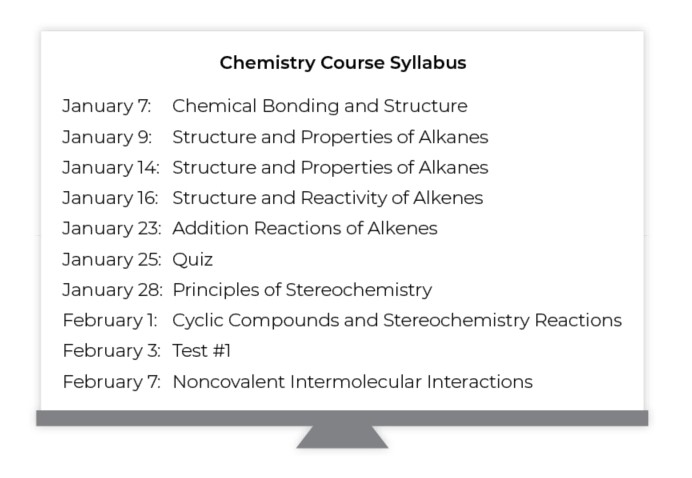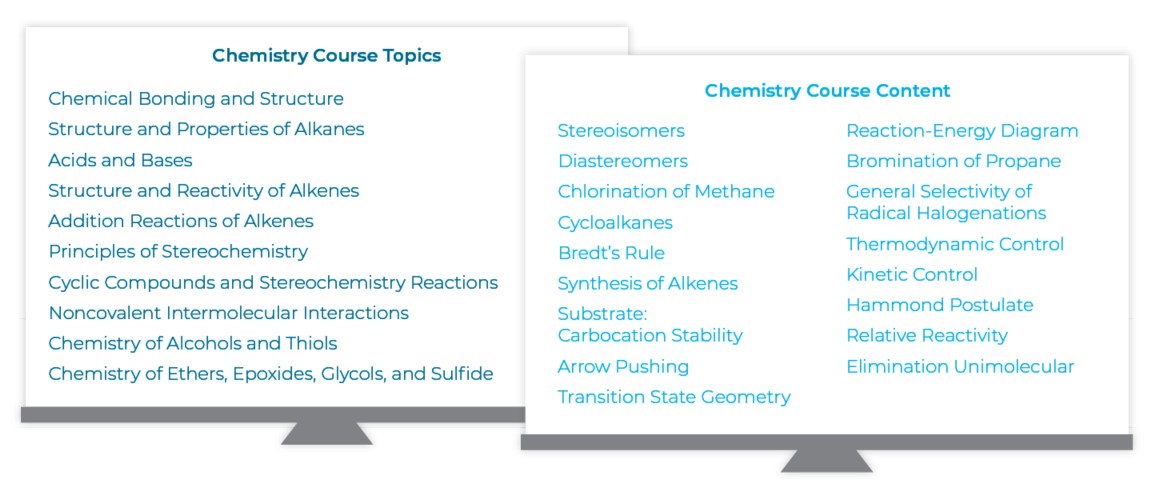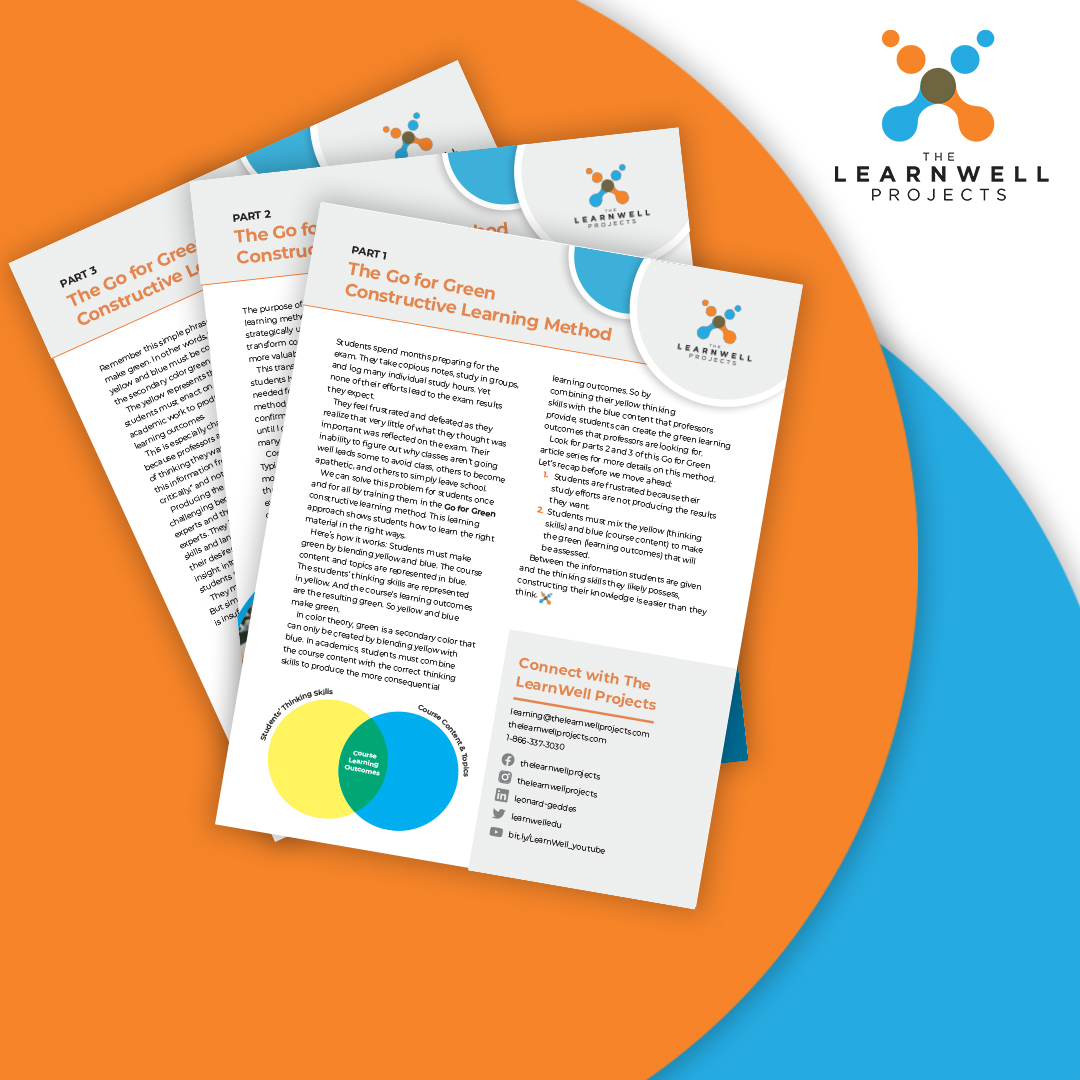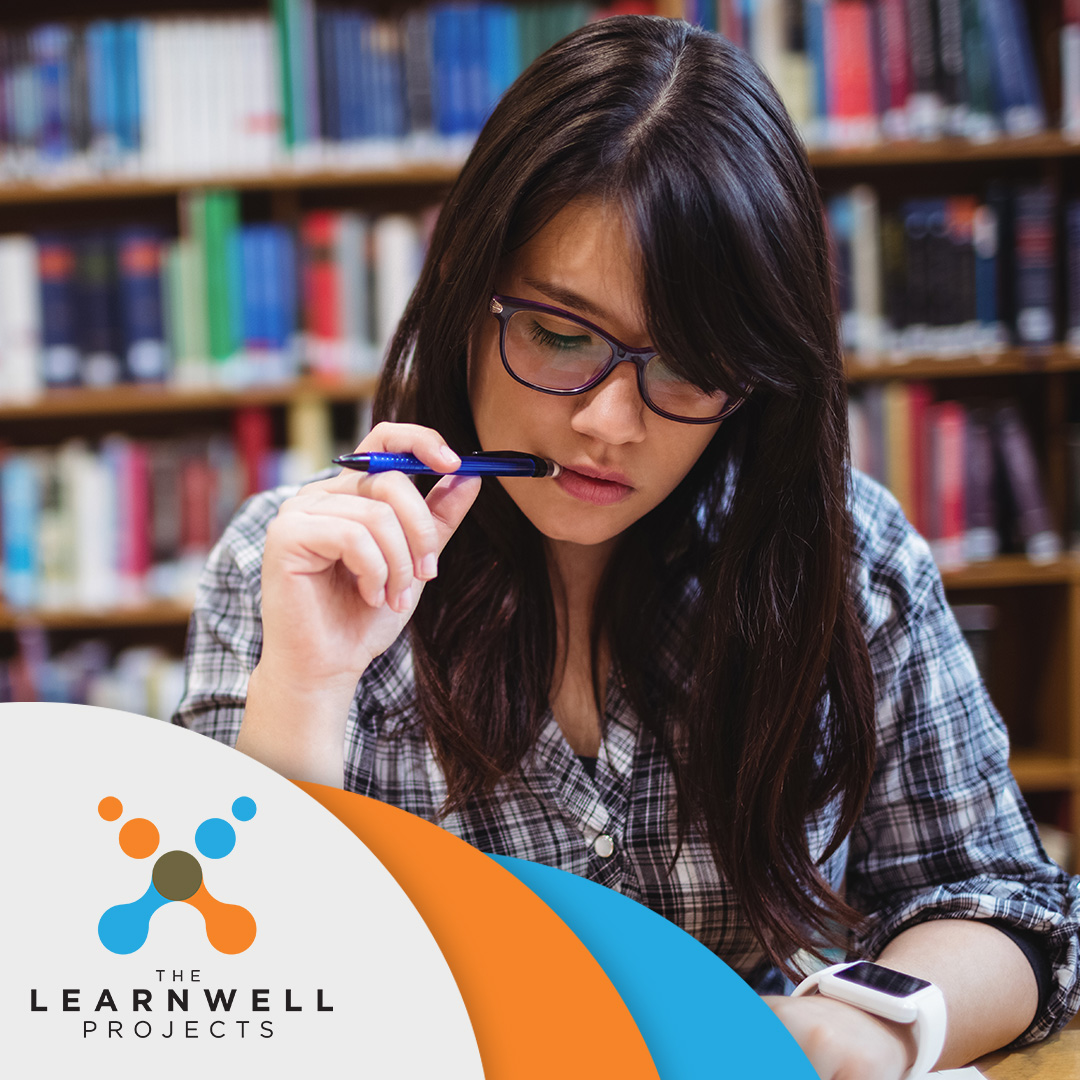Consider the structure of a college course. Typically, professors outline some of the more important topics that will be covered throughout the course. Below you see an example of how these course topics may appear on a chemistry course syllabus.

Students don’t know how to respond when they encounter questions or problems on tests or assignments that are different from the information that was presented during class. When students are unable to solve the problems or produce the correct response, they presume that they must have captured the wrong information or that the classroom content was somehow irrelevant. But they are sorely wrong. This information is very relevant. The students simply don’t know that their job is to transform the explicit information that was presented in class into the more implicit knowledge products that their professors will assess.
For example, this topical information may be included on a chemistry syllabus. However, the professor may cover this information in various ways throughout the course. This material may be covered explicitly through lectures, or it could be presented in a textbook or even included in a verbal tangent that the professor takes during class.

In the Go for Green constructive learning method, there are two additional course components that students must factor in. These final components will be covered in part 3. But let’s recap before we move ahead:
- Students unnecessarily struggle in courses because they don’t know how to construct their learning. In other words, they don’t know how to blend and synthesize raw academic material into fully formed knowledge products.
- Students misdiagnose their problems by wrongly confusing information extraction with knowledge transformation. They wrongly calculate that they must have captured inaccurate information or that their professors are misleading them with irrelevant content.
- Even when students capture the correct information (the topic and the content), they are only capturing the blue part of our color equation.
In part 3, we’ll look at the most critical component of constructive learning: the yellow in our color equation.



0 Comments